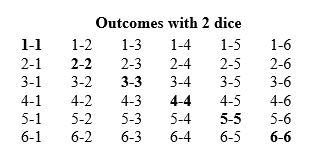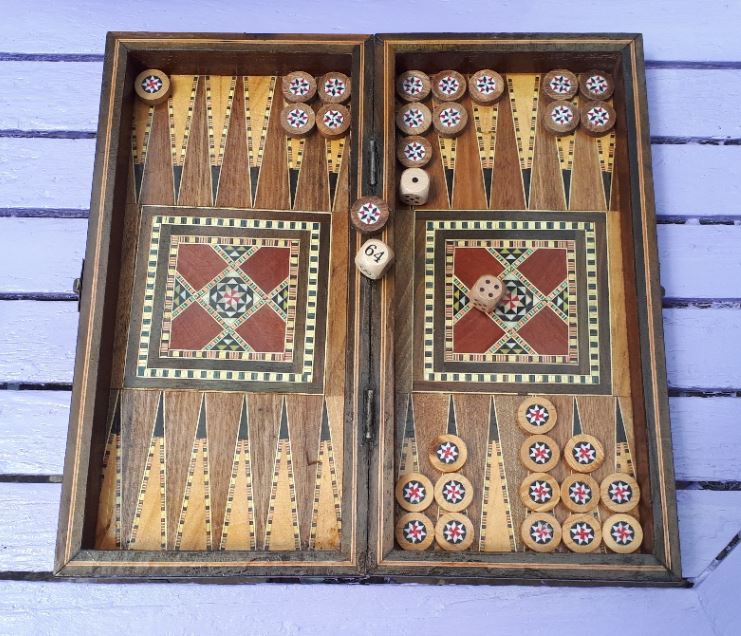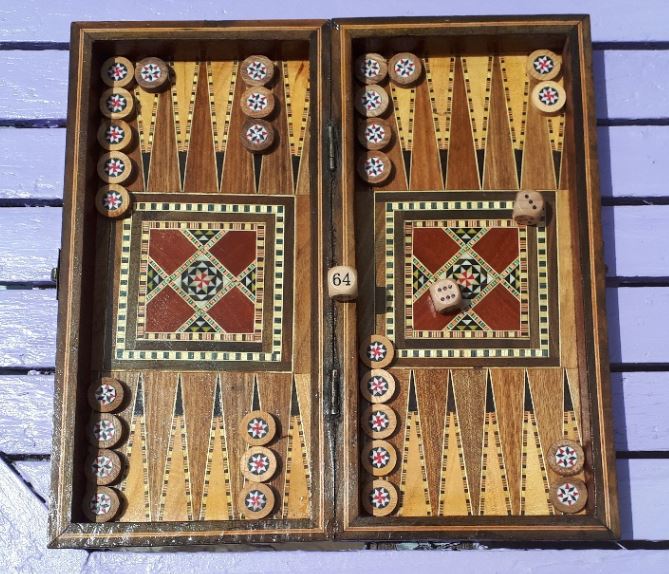Last updated on October 18, 2023
In an earlier Deluxe Backgammon post, in our backgammon for beginners series, we covered the concept of flexibility for creating your own luck. In summary, flexibility means that you have checkers available to do something you want to do with as many different dice rolls as possible. Duplication, in backgammon, is the exact opposite. It involves limiting the number of effective rolls your opponent has to play. You attempt to play your moves in such a way that your opponent needs the same number to accomplish their goals everywhere on the board, thereby limiting their options. In this way, you reduce their effective rolls to a minimum, giving yourself the best possible chance to win.
Duplication
Duplication is one of the most fundamental tactical ideas in backgammon. Understanding the basics of duplication is often what separates the intermediate player from the beginner. There are 21 different possible dice rolls in every turn, and each of these rolls leads to different positions. The dice rolls are random, so we cannot predict what numbers are going to be rolled. However, we can try to make our moves to maximise the number of good rolls for ourselves and restrict the number of good rolls for the opponent. The latter can often be achieved by duplication. If a number is of use for the opponent in two places, then they can’t do achieve two objectives, unless they are lucky enough to roll doubles.
For example, when you must leave multiple blots exposed, but you have a choice of where to leave your blots, you will want to minimize your opponent’s shots. When the numbers which your opponent can use to hit each blot are the same, their rolls are said to be duplicated. This often, not always, means they need to roll a specific double to hit both targets.
Duplication can be applied even when you have only one blot at risk. In deciding where to leave that lone checker, examine the rolls your opponent requires to hit each position. Can you use the same numbers elsewhere on the board to secure a point or to escape from a prime? If so, you have duplicated your opponent’s numbers. Let’s take a look at a couple of practical duplication examples.
Examples
In the example below, we can see that black has a checker on the bar and white is about to move after a roll of 4-1. White has a number of options to consider. For instance, they could move 6/2, 6/5. However, this would give black two chances to re-enter with any rolls including a 6 or a 4. Moving the lone checker down from the 13-point is the best option as it needs to get into the home board before any checkers can bear off. Moving it only one point is not an option as then you are forced to move a checker off the 5 or 6-points leaving a blot.
One choice is to move 13/9 and move the 1 from 3 or 2-points. The other choice is to move 13/8 using the numbers from both dice. In both instances, white leaves a blot in the outer board. The correct move is 13/8. Ideally, black wants to achieve two objectives, re-enter and hit the blot. If white had left the blot on the 9-point, black would have been able to re-enter with a 4 and hit the blot with either 5-4 or 4-5. This is 2 chances in 36. By placing the checker on the 8-point, black can now only enter and hit with 4-4, 1 chance in 36. By making use of backgammon duplication white has reduced black’s chances of entering and hitting the blot by fifty per cent.
Creating difficult decisions
Another example is shown below. Black opened with a 2-1 and has moved 13/11, 6/5. They have a builder in their outer board and hope to secure the 5-point with their next roll. White has responded with a 6-3 Unfortunately, with that roll white has no choice but to leave lone checkers that are vulnerable for a hit. Although, white cannot hit or secure a point they can still leave black with a difficult decision on their next roll.
White has a number of different moves to consider. However, one move stands out, which is 24/15. This move leaves black with a difficult choice if the roll includes a 1 or a 3 on their next turn. Black then needs to choose between hitting the blot on white’s 15-point or securing their own 5-point. If black rolls 1-3 exactly, they can achieve both objectives.
Duplication moves are a great way of increasing the likelihood of a subsequent throw being to your advantage. It is an essential skill of backgammon that utilises probability to create favourable rolls for yourself and to force your opponent into difficult situations.
Related content
Wikipedia – backgammon duplication.




Good points. Duplication is a tactical concept which can lead a player to make the correct play in a number of situations. The concept is fairly simple. A player finds themselves in a difficult position, they have rolled an awkward set of numbers. No matter what they do, their opponent will have a number of options that will cause damage in reply. The player wants to minimise the number of their opponent’s rolls that can hurt them. What can the player do?
The simple answer is duplication. The player needs to play their numbers in such a way that their opponent needs the same numbers to accomplish their goals everywhere on the board, rather than different numbers in different places. In this way, the player reduces the effective numbers to a minimum, giving themselves the best possible outcome, rather than the worst. It’s better to be hit once, than twice in a turn. This is what duplication in backgammon is about, you know something bad is going to happen, just make sure you limit it where possible.
Hi Bev, nice summary. Thanks for taking the time to comment on this Deluxe Backgammon post, Jason.